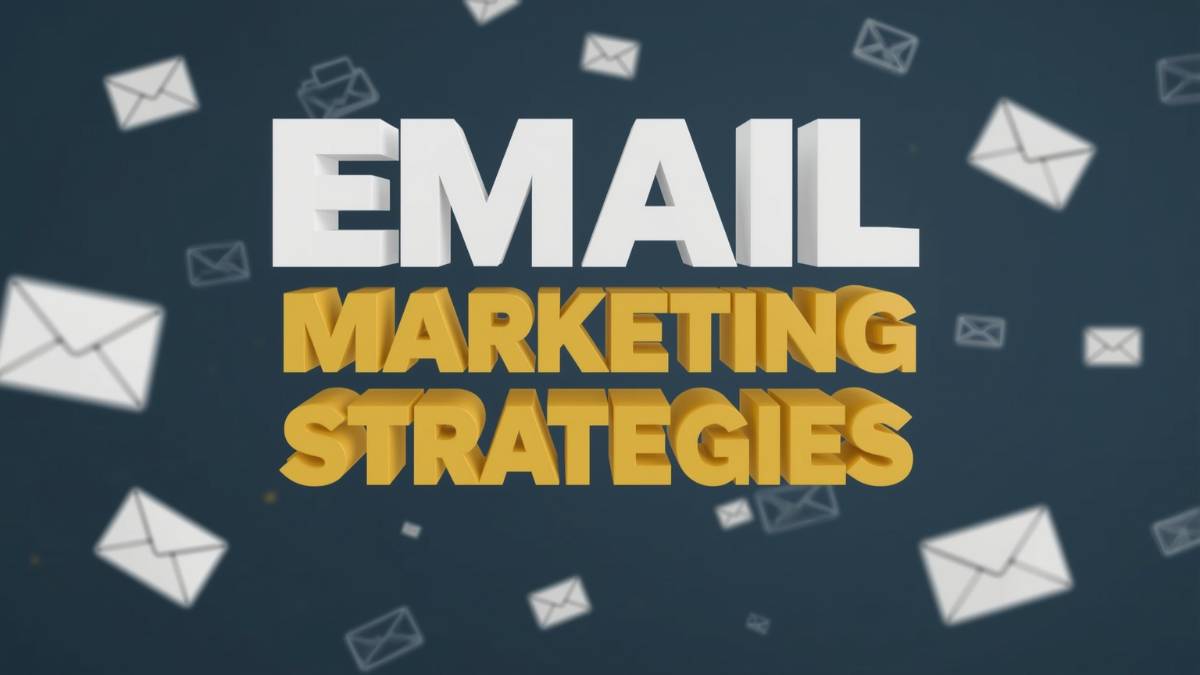If you’re wondering whether email marketing still works in 2025, here’s the truth, it absolutely does.
We’ve got social media, paid ads, influencers, and AI popping up everywhere. But email? It’s steady. It’s personal. And if you use it right, it works better than most other platforms.
Why? Because it lands right in someone’s inbox. No algorithm is deciding whether they see it. No ads fighting for attention. Just you, talking to your audience directly.
And that’s why this guide exists. I’m going to break down the best email marketing strategies that actually help you grow your audience, build trust, and get sales. No fluff. Just the stuff that works.
Table of Contents
What is Email Marketing, Really?
Forget the marketing jargon for a second. Email marketing is basically sending helpful or interesting emails to people who said, “Yeah, I’d like to hear from you.”
That’s it.
It could be a weekly newsletter. It could be an email about your new product launch. It could be a discount for your loyal customers.
The point is, they signed up for it. That’s why it works so well.
With good email marketing strategies, you’re not just sending random messages, you’re building relationships. Relationships turn into sales. And that’s how small businesses turn into big ones.
Also Read: Advantages and Disadvantages of Email Marketing
The Email Marketing Strategies That Actually Work
Let’s get to the part you came here for. These are not hacks. These are not “quick tricks.” They’re real strategies that keep working, year after year.
1. Know What You Want From Each Email
Sounds basic, right? But most people skip this step.
Ask yourself: What’s the point of this email?
- Do you want to build trust by sharing something helpful?
- Are you launching a product?
- Are you reminding people about something they forgot to do?
Pick one goal. Focus on that. That’s how you write emails that don’t get ignored.
2. Build an Email List the Right Way
Buying email lists is a terrible idea. Don’t do it.
Here’s how you grow a real list:
- Give away something valuable. Free guide, template, discount, whatever fits your audience.
- Add signup forms to your website.
- Use pop-ups, but don’t make them annoying.
- Promote your list on your social media.
Make sure people want to be there. The quality of your list matters more than the size.
3. Don’t Send the Same Thing to Everyone (Segmentation)
This is where most email marketing fails. Not everyone on your list is the same.
Some people just signed up yesterday. Others have been around for months. Some have already bought something. Some haven’t.
So don’t treat them all the same. Break your list into groups, like:
- New subscribers
- Loyal customers
- People who haven’t opened your last 5 emails
Now you can send the right message to the right people. And that’s when your email marketing starts feeling personal, not spammy.
4. Subject Lines Matter More Than You Think
If they don’t open the email, the rest doesn’t matter.
Your subject line is the doorway. Make it interesting. Make it useful. Make them curious.
Some ideas:
- “Did you forget this?”
- “This one’s just for you, [Name]”
- “3 quick tips to help you [get a result they want]”
Shorter usually works better. People are busy. Don’t make them think too hard.
5. Keep the Email Itself Short
We’re all skimming. Hard truth: nobody wants to read an essay in their inbox.
Here’s what works:
- Start with something that makes them curious or solves a problem.
- Use bullet points when you can.
- Stick to one call-to-action (not three, not five, one).
Examples of good CTAs:
- “Get the guide”
- “Shop the sale”
- “Book your spot”
Short. Simple. Direct.
6. Personalization Is More Than Just Using Their Name
Look, starting your email with “Hi [Name]” is fine, but that’s just the start.
Real personalization is about sending people what they actually care about. Like:
- Products based on what they browsed or bought
- Helpful content based on their interests
- Reminders about things they left in their cart
Make your emails feel like they’re written for that one person, not your whole list.
7. Send Emails at the Right Time (But Test It)
Want better results? Timing matters. But don’t just follow random “best times” you see online, test it for yourself.
Some general ideas:
- For B2B (business audiences): Mornings on weekdays work well
- For B2C (regular shoppers): Evenings and weekends often perform better
Send at different times. Watch what works. Then adjust.
8. Automate the Boring Stuff
Don’t make your life harder than it needs to be.
Set up automated emails for things like:
- Welcoming new subscribers
- Sending a discount when someone abandons their cart
- Checking in with people who haven’t opened in a while
Automation means you can grow without needing to write every email manually.
9. Track, Learn, Repeat
You can’t improve what you don’t measure.
What should you track?
- Open rates (Are people opening it?)
- Click rates (Are they clicking your links?)
- Conversions (Are they buying or signing up?)
- Unsubscribes (Are you annoying people?)
Numbers don’t lie. Use them to tweak what’s not working, and double down on what is.

Enroll Now: Advanced Digital Marketing Course
How to Grow Your Email List Faster
If you’re serious about this, focus on list-building like it’s your job. Here’s how:
- Give away a useful freebie (checklist, template, guide)
- Add signup forms in blog posts, not just the homepage
- Run giveaways that require an email signup
- Ask your social media followers to join your list for special offers
A bigger list doesn’t mean more sales, but a better list does.
Also Read: Email Marketing Metrics
Mistakes to Avoid (That Most People Make)
Even good marketers mess this up sometimes. Watch for these:
- Sending the same email to everyone, all the time
- Writing emails only about your products (talk about them, not just you)
- Making it hard to unsubscribe (annoying = spam complaints)
- Ignoring mobile → most people check emails on their phones
- Forgetting to proofread before you hit send
Fix these, and you’re already ahead of most businesses.
Also Read: 21 Types of Email Marketing Every Marketer Must Know
Easy Email Design Tips
You don’t need fancy graphics or wild designs. You need clarity.
- Make it super easy to read on mobile
- Use bold text for key points
- Use buttons for links, not just plain text
- Balance images and text
- Always add alt text to your images in case they don’t load
Good design doesn’t shout. It guides.
Tools That Make Email Marketing Easier
Here are a few solid tools you can trust:
- Mailchimp → Great for starting out
- Brevo (Sendinblue) → Excellent automation features
- Klaviyo → Fantastic for online stores
- ConvertKit → Built for creators and bloggers
- Litmus → Helps you test how your emails look across devices
Start simple. Add more tools when you need them.
Also Read: Top AI Email Writers
Email Works Best With Other Channels
Email isn’t your whole marketing plan, it’s part of it. Combine email with:
- Social media → Promote your list
- SMS → Send time-sensitive deals
- Ads → Retarget people who opened your emails but didn’t buy
Think of email like your home base. Everything else should point people back to it.
A Few Brands Who Do This Really Well
- Airbnb → Personal recommendations based on where you’ve stayed or searched
- Sephora → Loyalty rewards right inside their emails
- Grammarly → Weekly progress reports to keep you hooked
Watch what the big brands do. Borrow their ideas. Make them fit your audience.
What’s Changing in Email Marketing?
Email’s not going anywhere. But here’s what’s changing:
- AI is making personalization smarter
- Interactive emails (like filling forms inside the email) are showing up
- Privacy rules are stricter → always ask for permission and respect it
What stays the same? People still want emails that help them. That’s not going to change.
Also Read: Email Newsletter Format
Conclusion
Email marketing isn’t dead. It’s not even tired.
It’s just misunderstood by people who treat it like spam.
Do it right, and email builds trust, creates loyal customers, and brings in steady sales, without spending crazy money on ads.
Start simple. Focus on email marketing strategies that feel human. Test. Tweak. Repeat. That’s how you win with email.
FAQs
Q1. What’s the number one email marketing strategy?
Grow a permission-based list and send helpful, relevant content to people who actually want it.
Q2. How often should I send emails?
Start with once a week. If people like it, you can test twice a week. Just don’t overwhelm them.
Q3. How do I get better open rates?
Work on your subject lines. Keep them short, personal, or curious, and make sure the email delivers on the promise.
Q4. Are these email tools expensive?
Many start free. Paid plans help as you grow. Mailchimp, Brevo, ConvertKit, all have starter plans that work for small businesses.
Q5. Does email work for small businesses too?
Yes, especially for small businesses. It lets you talk to people directly, build real relationships, and make sales without paying for ads.

